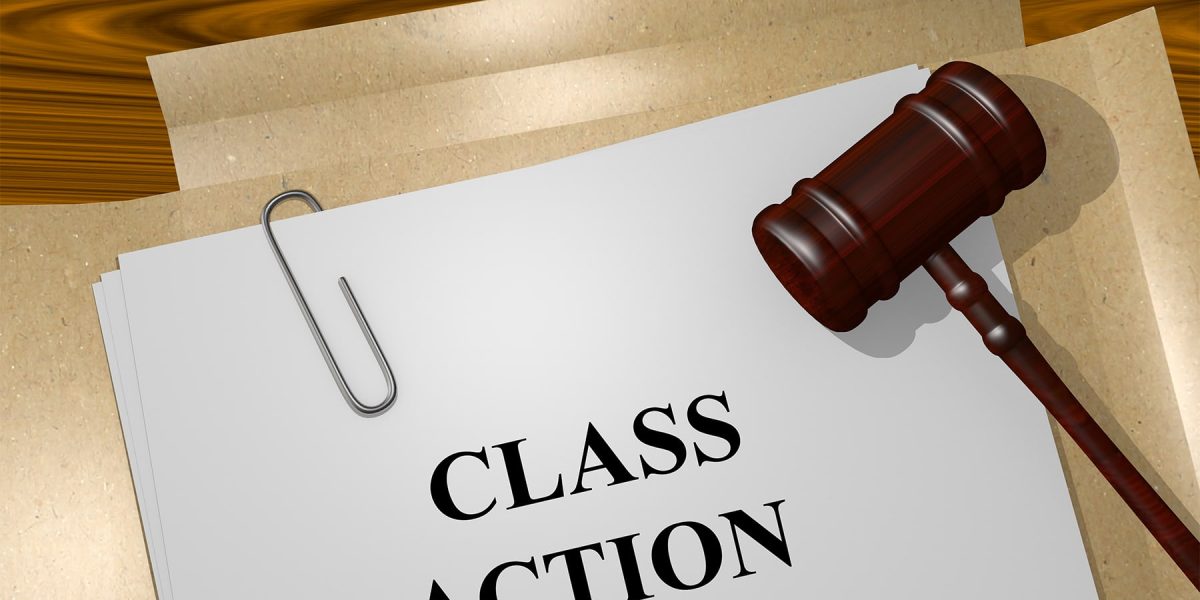Exploring Class Action Suits: What You Need to Know
Class action claims have become progressively common in today's lawful landscape, with people joining forces to look for redress against companies and organizations. In this discussion, we will discover the ins and outs of class activity legal actions, losing light on their meaning, the demands for declaring, and the potential advantages and disadvantages entailed.
The Meaning of Class Activity Claims
Just what is the meaning of a class action legal action? A class activity lawsuit is a lawsuit filed by a group of individuals that have comparable cases versus a defendant. It permits a large number of individuals, known as the course members, to join with each other and seek their insurance claims jointly, instead of each individual filing a separate legal action. When the number of prospective plaintiffs is as well huge for specific claims to be sensible, Course action claims are normally brought. They are commonly used in situations including customer protection, product responsibility, securities scams, and employment concerns.
Among the crucial elements of a course action suit is that the lead plaintiff, additionally called the class representative, stands for the rate of interests of all the course participants. The court selects the lead plaintiff based on their capability to rather and appropriately stand for the course. The lead plaintiff works carefully with the class action lawyer to build a solid instance and seek payment or various other solutions on part of the whole class.
In order for a course action lawsuit to continue, the court must accredit the class. This indicates that the court figures out that the claim fulfills particular requirements, such as numerosity (a large sufficient variety of class participants), commonality (usual inquiries of regulation or truth), typicality (the claims of the lead complainant are regular of the course), and competence of depiction (the lead plaintiff and class advise are qualified of standing for the course's rate of interests) When the class is licensed, the legal action can progress, and any type of judgment or negotiation reached will use to all course members unless they pick to opt-out.
Course action claims serve a vital objective in supplying accessibility to justice for people that may not have the resources to pursue their claims individually. They likewise promote effectiveness in the lawful system by combining comparable cases right into a single activity, decreasing the worry on both the court and the celebrations entailed.
Demands for Submitting a Course Action Suit

One more demand is that the course must be sufficiently various. The precise variety of class members needed might vary depending upon the territory and the nature of the situation. Nonetheless, it is typically expected that the course needs to be huge sufficient that signing up with all the private plaintiffs into a single claim is a lot more effective than having several separate suits.
Additionally, it is essential that the class rep, who is the specific or entity bringing the legal action on part of the course, has normal cases and defenses to those of the class members. The representative should additionally be able to effectively and fairly stand for the interests of the entire class.

Advantages and Drawbacks of Course Activity Legal Actions
Course action lawsuits provide both advantages and disadvantages for plaintiffs and accuseds involved in the lawful process. On the one hand, one of the significant benefits of class activity legal actions is that they supply a effective and affordable method for individuals with comparable insurance claims to pursue justice jointly. By combining various comparable situations into one legal action, course actions simplify the lawful process and save time and sources for both accuseds and plaintiffs.
One more advantage of course action claims is that they permit individuals with restricted resources to look for compensation for their damages. In situations where the possible healing is small, private lawsuits may not be economically sensible. Nevertheless, by signing up with forces in a class activity, complainants can pool their sources and enhance their possibilities of getting a fair resolution.
In addition, class actions can advertise social modification by holding firms responsible for their actions. By bringing focus to prevalent misconduct or defective products, class actions can press business to alter their methods, boost item safety and security, or implement reforms.
However, class actions also have drawbacks. One potential downside is that private complainants might have restricted control over the lawsuits process and the utmost result of the situation. The lead complainants and their attorneys commonly make vital choices in support of the whole course, which might not constantly straighten with the specific passions of each course participant.
Furthermore, course activities can be time-consuming and lengthy, commonly taking years to get to a resolution. redirected here The intricacy and dimension visit their website of these legal actions can cause hold-ups and extended lawsuits, which can be discouraging for both plaintiffs and offenders seeking a prompt resolution.
Actions Entailed in a Class Activity Legal Action
The process of a course activity lawsuit typically starts with the identification of a possible class and the declaring of a problem. When a team of people who share comparable cases versus an offender is determined, the lead plaintiff, or course representative, files an issue on part of the whole class. This issue outlines the supposed wrongdoing and looks for problems or other alleviation for all members of the class.
After the complaint is filed, the court will certainly identify whether the instance meets the needs for class qualification. These requirements generally consist of numerosity (a large adequate class), commonness (similar lawful insurance claims), typicality (the lead plaintiff's cases are representative of the course), and adequacy of depiction (the lead plaintiff and their lawyer can sufficiently represent the class's passions)
If the court accredits the course, notice is given to all possible class participants, providing the opportunity to opt-out if they want to seek their own individual claims - Assertio class action lawsuit. If an enough number of course members remain, the case will continue to the discovery stage, where both sides collect evidence and info pertinent to the claims
Adhering to discovery, the celebrations might participate in negotiation arrangements or continue to test. If the instance mosts likely to test and the course dominates, the court will certainly identify the suitable damages or relief to be awarded to the class members.
Recent Site Class Action Lawsuits
With a solid understanding of the actions involved in a course action claim, it is now essential to analyze some recent site instances that have made a significant impact in the legal landscape. Archer-Daniels-Midland class action lawsuit. These cases have not just formed the method class activity legal actions are performed yet have also produced changes in various markets
One such landmark case is the Volkswagen exhausts detraction, which resulted in the largest course action settlement in auto history. In 2015, it was revealed that Volkswagen had actually set up software in their vehicles to rip off discharges tests. This deceptiveness affected numerous customers worldwide, resulting in a course action lawsuit. The negotiation reached in 2016 totaled up to around $15 billion, compensating afflicted cars and truck owners and penalizing on Volkswagen.
Another significant case is the Johnson & Johnson talc suit. Hundreds of ladies filed claims against the firm, declaring that their talcum powder items caused ovarian cancer cells. In 2018, a jury awarded $4.7 billion in damages to 22 complainants. This case elevated concerns regarding the safety of talc and prompted Johnson & Johnson to change their product labeling.
These current landmark situations show the power of course activity lawsuits in holding corporations liable for their Archer-Daniels-Midland class action lawsuit activities and looking for justice for affected individuals. They serve as instances of just how course action suits can bring about considerable adjustments and protect the legal rights of customers.
Verdict
Finally, class activity claims are a legal mechanism that enables a group of people to jointly look for justice for an usual complaint. While they offer several benefits such as efficiency and cost-effectiveness, there are also drawbacks such as potential for limited settlement and extensive lawful process. Recognizing the steps and requirements associated with filing a course activity claim is crucial for individuals seeking to seek this lawful opportunity. Recent site class action suits have highlighted the relevance of such situations in promoting for consumer legal rights and business liability.
One of the essential elements of a course activity suit is that the lead plaintiff, also recognized as the course rep, represents the interests of all the course members.In order for a course action lawsuit to continue, the court needs to certify the class. This indicates that the court identifies that the lawsuit fulfills specific needs, such as numerosity (a huge sufficient number of course participants), commonness (typical inquiries of law or reality), typicality (the claims of the lead complainant are typical of the course), and competence of representation (the lead complainant and class advice are capable of representing the course's interests) When the class is accredited, the lawsuit can move ahead, and any judgment or settlement got to will apply to all course members unless they pick to opt-out.
The process of a class action suit usually starts with the recognition of a potential course and the filing of a grievance.
Comments on “Navigating the BioVie Class Action Lawsuit: What You Need to Know”